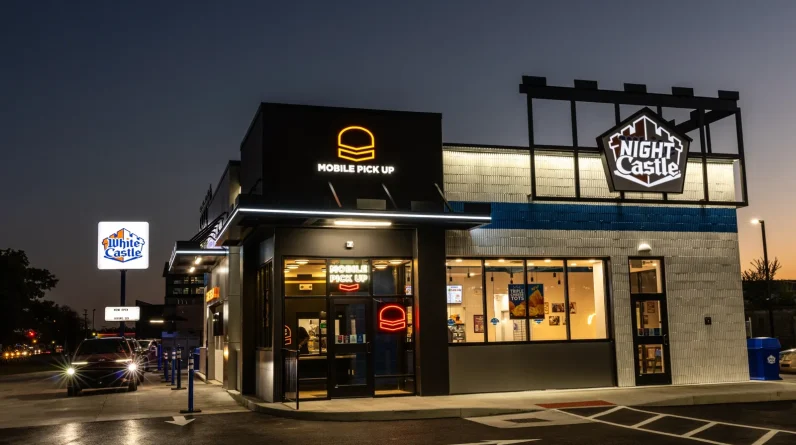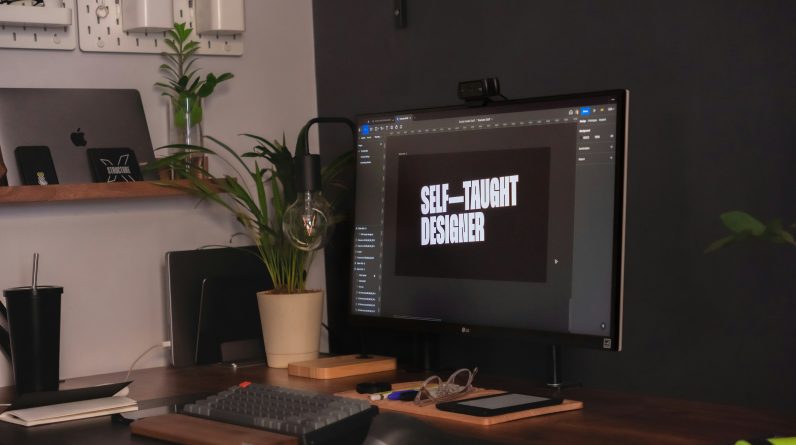
The building’s exterior retains the brand’s iconic castle design but adds new materials, accents, and lighting to create a modern feel. Perhaps the most notable update is the adaptive signage that transitions from “White Castle” during the day to “Night Castle” after dark, a nod to the chain’s long-standing late-night following.By Dustin Stone, RTN staff writer – 10.17.2025
The push to enhance on-premise dining experiences is reshaping restaurant design across categories, from fast casual to quick service. As consumers seek more than just value pricing, ambiance and experience have become defining aspects of perceived value. According to Technomic data, consumer spending has shifted toward on-premise dining in 2025, reflecting a desire for what analysts call “holistic value” that combines food quality, service, and experience.
Brands from Cava to Starbucks to Pizza Hut have responded by reimagining their dining rooms. Each has invested in creating warmer, more social environments that encourage guests to linger, rather than rush. Even legacy brands are taking note. White Castle, at 104 years old, is among the latest to embrace a tech-enabled reinvention, debuting its “Castle of Tomorrow” near downtown Columbus, Ohio, a prototype designed to merge tradition with cutting-edge restaurant technology.
Founded in 1921 in Wichita, Kansas, White Castle is widely regarded as America’s first fast-food hamburger chain. Its founders, Billy Ingram and Walter Anderson, pioneered the concept of the quick-service restaurant, standardizing menu items and operations in a way that would influence the entire industry. Over the decades, White Castle became known not only for its iconic small square sliders but also for its distinctive castle-themed architecture. Still family-owned and based in Columbus, the company operates 341 restaurants across 14 states and has maintained an intensely loyal fan base known as “Cravers.” Its frozen retail division has also grown significantly, putting the Original Slider in grocery store freezers nationwide and expanding the brand’s reach far beyond its physical restaurants.
 A dedicated mobile order pickup window keeps digital orders flowing smoothly while maintaining a relaxed front counter experience for dine-in guests.
A dedicated mobile order pickup window keeps digital orders flowing smoothly while maintaining a relaxed front counter experience for dine-in guests.
The new location, developed in partnership with WD Partners, is a vivid rethinking of the classic White Castle design. It features higher ceilings, bright lighting, and a spacious, open layout intended to make both guests and employees feel more comfortable. A dedicated mobile order pickup window keeps digital orders flowing smoothly while maintaining a relaxed front counter experience for dine-in guests. Outside, the restaurant features a double drive-thru with “hospitality doors,” allowing team members to deliver orders directly to cars, a layout that mirrors design strategies seen at Chick-fil-A and other throughput-focused operators.
In the kitchen, White Castle has refined both technology and ergonomics. The new layout improves workflow and comfort for team members, part of the chain’s continuing effort to optimize labor efficiency and workplace satisfaction. The restaurant includes the latest generation of Flippy, the robotic fry station assistant developed by Miso Robotics, and Julia, the company’s AI-powered drive-thru voice assistant named after a long-time team member. Together, these technologies aim to improve order accuracy, speed, and consistency while easing the workload on staff.
Inside, guests can order through self-service kiosks, which have become increasingly common across QSR and fast casual brands. By combining automation in the back of house with streamlined digital ordering in the front, the brand seeks to balance efficiency with hospitality. “Every detail, from the kitchen layout to the mobile ordering experience, was thoughtfully designed to help our team members shine and to make every Craver’s visit more enjoyable and efficient,” said Jamie Richardson, vice president at White Castle.
The “Castle of Tomorrow” also represents a shift in visual identity. The building’s exterior retains the brand’s iconic castle design but adds new materials, accents, and lighting to create a modern feel. Perhaps the most notable update is the adaptive signage that transitions from “White Castle” during the day to “Night Castle” after dark, a nod to the chain’s long-standing late-night following.
White Castle’s investment in its next-generation prototype follows a broader trend among major QSRs and fast casual players who are rebalancing digital convenience with in-person experience. After years of drive-thru and delivery growth accelerated by the pandemic, operators are rediscovering the strategic value of their physical spaces, not just as fulfillment centers but as extensions of the brand.
Cava, for example, began redesigning its dining rooms in 2024 to make them feel more welcoming and aligned with its Mediterranean ethos. Subway and Taco Bell have also rolled out new prototypes emphasizing open kitchens, natural materials, and flexible seating. Meanwhile, Starbucks has continued to test dual-format stores that combine digital pick-up efficiency with café-like ambiance.
At the same time, automation and AI are transforming operations behind the scenes. Chains such as Panera, McDonald’s and Carl’s Jr. have piloted AI ordering systems similar to White Castle’s Julia, while Wendy’s and Hardee’s have tested kitchen robots for frying and beverage prep. According to research from Deloitte, more than 40 percent of QSR operators plan to increase investments in AI or robotics in 2025 to address labor shortages and improve throughput.
White Castle’s new design reflects both sides of that equation: a human-centered guest experience supported by automation where it counts most. The restaurant’s enhanced back-of-house layout, use of robotics, and digital integration all point toward a model that could redefine QSR efficiency without losing the hospitality touch.
White Castle’s prototype arrives as part of a larger wave of experimentation in restaurant design. Chipotle’s Chipotlane Digital Kitchens have been expanding in 2025 with layouts optimized entirely for mobile orders, while Taco Bell’s “Defy” concept in Minnesota uses elevated kitchens and vertical lifts to deliver meals directly to drive-thru customers. Both models demonstrate how restaurants are rethinking physical space to handle higher off-premise volumes without sacrificing service speed or consistency.
In this environment, White Castle’s “Castle of Tomorrow” stands out for its balanced approach. By blending automation, ergonomic kitchen design, and human hospitality, the company is showing how heritage brands can modernize intelligently, keeping pace with technology while preserving the familiarity and warmth that built their legacy.








